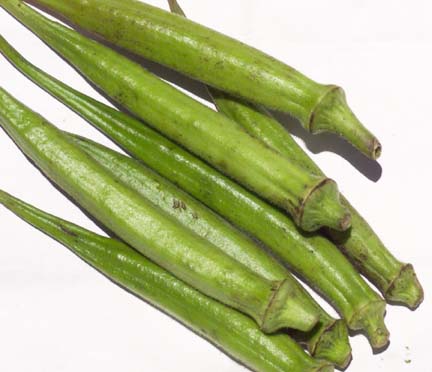

Key Ingredient

For Southerners, okra conjures up a bowl of thick gumbo. Here, okra is more readily associated with a dish like pinacbet -- a Filipino vegetable stew. Either way, this unique vegetable is readily available for cooking up in a variety of ways. Key Ingredient: Okra
Okra has also been used as a natural thickener for centuries and is often hidden in commercial products for that purpose today. Ketchup is one example.
The basics: Okra is the young seedpod of a plant closely related to the hibiscus. It originates in North Africa and was brought into North America through the slave trade. The pods became an essential ingredient in Southern cooking, where it is deep fried, steamed, sautéed and braised in a variety of dishes. Okra is known for the slimy juice that is excreted when the pod is cooked in liquid. Southerners say there would be no gumbo without okra (gumbo is Swahili for okra).
Selecting: Look for firm, bright green pods with stems intact. Avoid those that are limp or blemished. Pods that are too long (more than 4 inches), may be tough and fibrous.
Storing: Place okra in a plastic bag and refrigerate up to 3 days.
Use: Rinse pods before use. Okra can be used whole or chopped. Besides stews and soups, okra can be delicious as a deep-fried appetizer. (Use whole pods or chop pods in large chunks. Roll okra in flour, egg and cornmeal or dip in buttermilk and cornmeal and deep fry. The result is a crispy, French fry-like treat.) Pickling okra with spicy chilies and garlic is another way to enjoy them.
Where to buy: Fresh okra is now in peak season and should be available throughout the summer. A small bag at the farmers' market runs about $2 a bag, while supermarket prices range from $2.99 to $3.99 a pound.
Food Stuffs: Morsels
Contact Eleanor Nakama-Mitsunaga
online at features@starbulletin.com
Asterisk (*) after nutritional analyses
indicates calculations by
Joannie Dobbs of Exploring New Concepts,
a nutritional consulting firm.